Salmon Broccoli Mac and Cheese
Mindsmaking
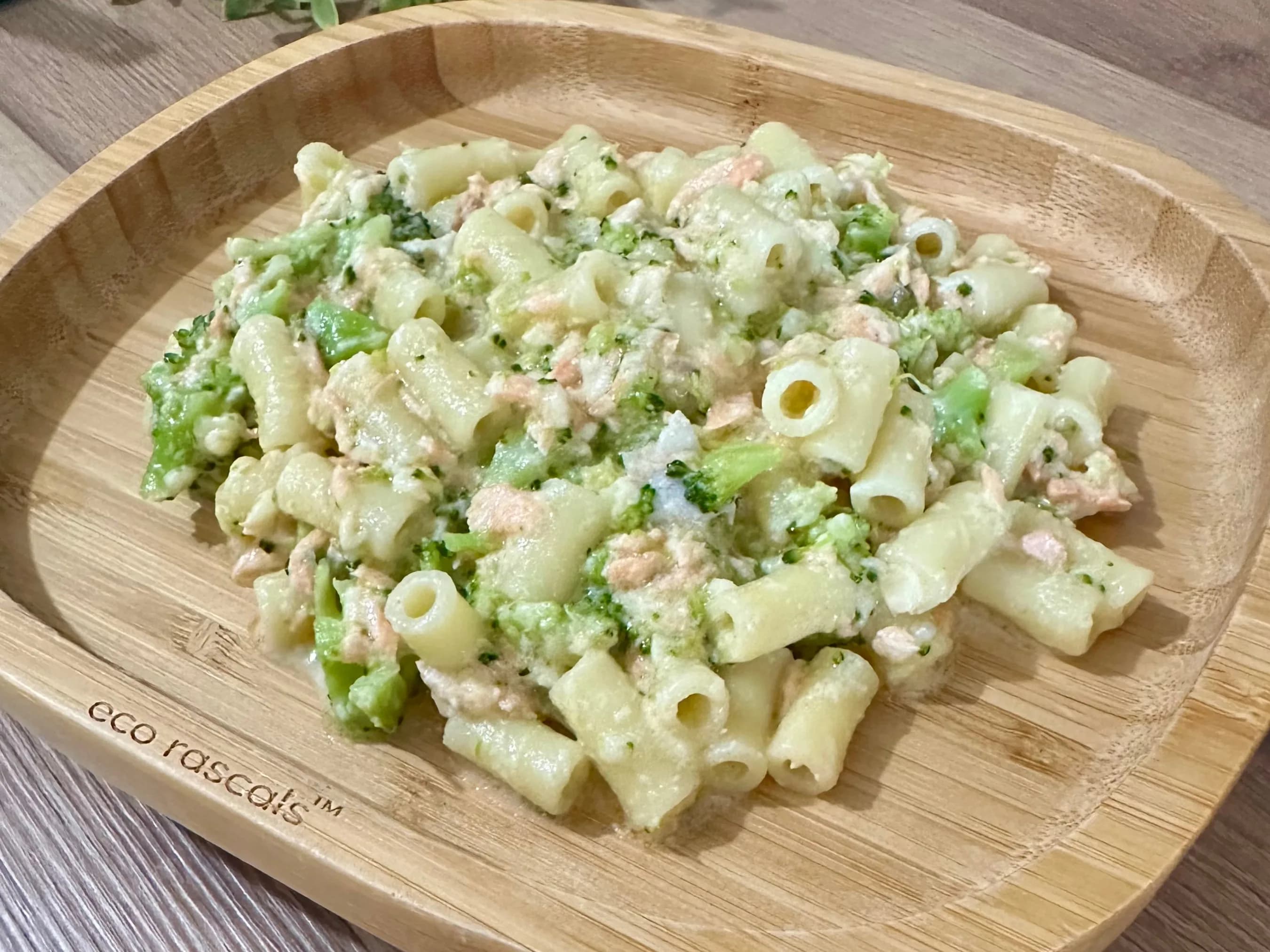
Written by Kenny Ekerin
Fact Checked by Mindsmaking Professionals
18th, November, 2025
This post may contain affiliate links. Please read our disclosure policy.
Enjoy a creamy, comforting Salmon Broccoli Mac and Cheese! Packed with tender salmon, broccoli, and a rich cheesy sauce, this nutritious and delicious meal is perfect for babies, toddlers, and adults, making it a great option for dinner.
Mindsmaking
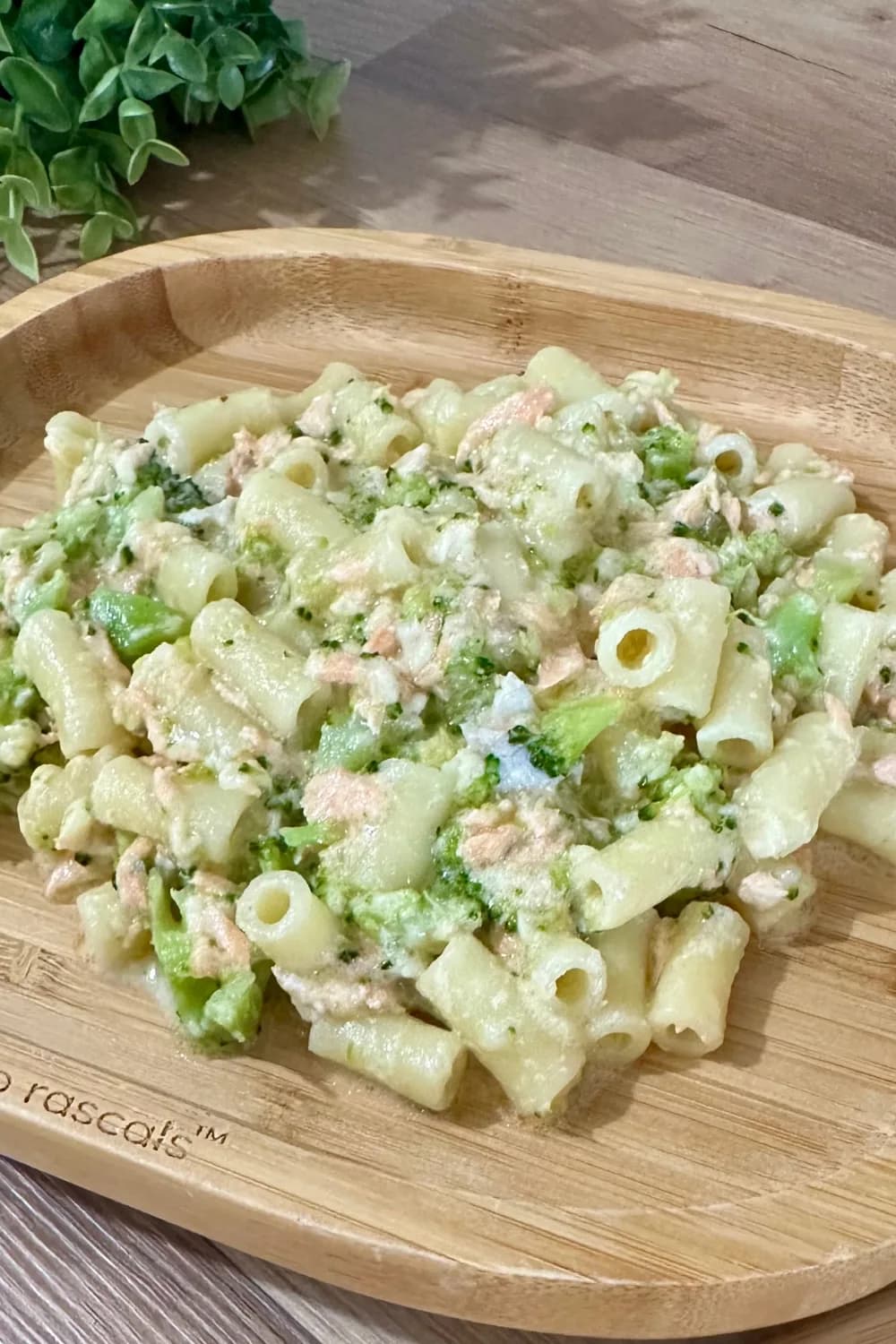
Reasons to Love This Salmon Broccoli Mac & Cheese
This Salmon, Broccoli, Mac and Cheese is a meal that the whole family can enjoy, from babies to adults. It’s packed with protein-rich salmon and nutrient-dense broccoli, making it a healthy yet comforting choice for everyone at the table.
The creamy cheese sauce ties everything together, creating a rich and satisfying dish that’s both indulgent and nourishing.
Another reason to love this recipe is its versatility. It's easy to make and adaptable to suit dietary preferences or what you have on hand. Whether using whole milk or a dairy-free alternative, this dish can easily accommodate different needs without compromising taste.
Plus, it's an excellent way to introduce new flavors and textures to young eaters, like the mild salmon and tender broccoli, while still delighting the whole family with its familiar, cheesy goodness.
With minimal prep and cook time, this recipe is perfect for busy days when you want to serve something quick and wholesome. It’s a great way to sneak in some healthy ingredients, ensuring your family gets the nutrients they need, without sacrificing flavor. It’s a true crowd-pleaser that brings everyone to the table!
Salmon Broccoli Mac and Cheese Recipe
Ingredients
1 cup macaroni: This is about 4 ounces of dry pasta. You can use traditional elbow macaroni or any small pasta shape, such as shells or rotini.
2 tbsp unsalted butter: This will be used to create the base of the cheese sauce (roux).
1 tbsp all-purpose flour: This thickens the sauce to create a rich, creamy texture.
1 cup cooked broccoli, chopped: Cook the broccoli until tender, then chop into bite-sized pieces. Steaming or blanching the broccoli helps maintain its bright green colour and nutrients.
170g cooked and shredded salmon: This is roughly 6 ounces of cooked salmon. You can use baked, grilled, or poached salmon. Shred it into bite-sized pieces using a fork.
1/2 cup mild cheddar cheese, shredded: This cheese melts smoothly, giving the sauce a creamy texture.
1/3 cup Parmesan cheese, shredded: Parmesan adds a nutty, salty flavour that complements the mild cheddar.
1 1/2 cups whole milk (or choice of milk): Whole milk creates a rich, creamy sauce, but you can use 2% or even a non-dairy milk alternative if preferred.
Salt to taste: Season the sauce and the final dish to enhance the flavours. (No salt for babies under 1 year old).
Mindsmaking
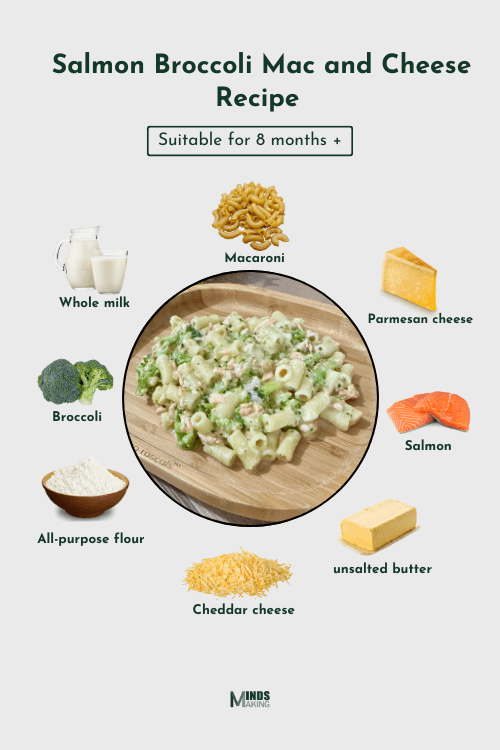
Instructions
1. Cook the Macaroni: Bring a pot of water to a boil. Add the macaroni and cook according to the package instructions until al dente (firm to the bite). Drain the macaroni and set it aside. If you’re not using it immediately, toss it in a little oil to prevent it from sticking together.
2. Prepare the Cheese Sauce: In a medium-sized pot, melt the butter over low heat. It’s important to melt it slowly to avoid burning. Once the butter is fully melted, sprinkle in the flour. Stir constantly with a whisk or wooden spoon to combine the butter and flour, creating a smooth paste called a roux. Cook the roux for about 1-2 minutes, stirring constantly. This helps to eliminate the raw flour taste. Slowly pour in the milk, a little at a time, while continuously whisking to prevent lumps from forming. Continue cooking over medium-low heat until the mixture begins to thicken and bubble slightly.
Mindsmaking
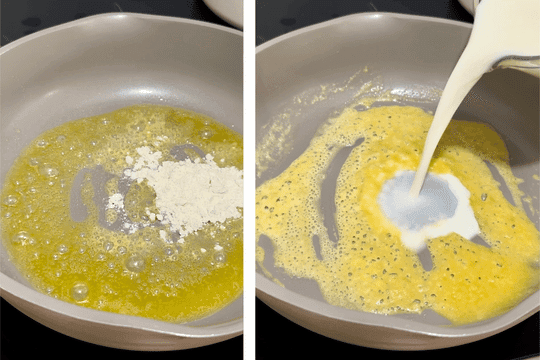
3. Add the Cheese: Reduce the heat to low. Gradually add the shredded mild cheddar and Parmesan cheese to the pot, stirring constantly. Allow the cheese to melt fully into the sauce. Continue stirring until the cheese sauce is smooth and creamy. If the sauce is too thick for your liking, you can add a little more milk to reach your desired consistency. Taste the sauce and add salt as needed.
Mindsmaking
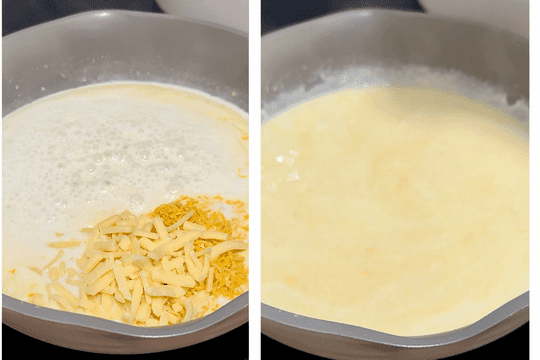
4. Incorporate the Broccoli and Salmon: Gently fold the cooked and chopped broccoli and the shredded salmon into the cheese sauce. Make sure they are evenly distributed. Add the cooked macaroni to the pot and gently stir to combine all the ingredients. Ensure that the pasta is thoroughly coated with the cheese sauce and that the broccoli and salmon are evenly mixed in.
Mindsmaking

5. Final Touches: Continue cooking on low heat for an additional 2-3 minutes to warm everything through. Stir occasionally to prevent the mixture from sticking to the bottom of the pot. Once everything is heated and well combined, remove the pot from the heat.
6. Serve and Enjoy: Allow the dish to cool for a few minutes before serving. This helps the sauce to set slightly and makes it easier to serve. Serve the salmon, broccoli, and macaroni and cheese warm, garnished with additional Parmesan or fresh herbs, if desired.
Read This Next

Recipe Ebook
Essential Guide to Starting Solids for Babies 6 Months+ - LBH Top 70 Baby Puree & Porridge Recipes eBook.
Start your baby’s solids journey with confidence using this "70 Baby Purees & Porridges" eBook! Created with care, this digital guide is packed with nutrient-rich recipes for babies 6 months and older, including purees and porridges tailored to each stage of your baby’s development.
Mindsmaking
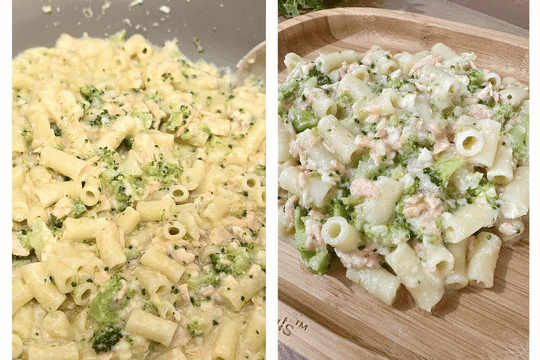
Tips for Success
Choose Fresh, Quality Ingredients: Use fresh broccoli to retain its vibrant colour and nutrients. Frozen broccoli works in a pinch, but thaw it thoroughly and drain the excess water. Choose high-quality salmon, whether it's fresh or frozen.
Prepare Ingredients in Advance: Cook the salmon and broccoli ahead of time so you can focus on assembling the cheese sauce and pasta. Shred the salmon and chop the broccoli into uniform pieces for even distribution.
Perfect Your Cheese Sauce: Cook the roux (a mixture of butter and flour) for 1-2 minutes to remove the raw flour taste, but don’t overcook it, or the sauce may develop a burnt flavor. Gradually add the milk while whisking to ensure a smooth, lump-free sauce. Add cheese in small batches, stirring until fully melted before adding more, to prevent clumping or graininess. If the sauce seems too thick, thin it out with a splash of warm milk.
Cook Pasta Al Dente: Slightly undercook the macaroni, as it will continue to cook when mixed with the cheese sauce. This prevents mushy pasta.
Balance Flavours: Cheddar provides creaminess, while Parmesan adds depth. Adjust the ratio based on personal preference. Avoid overpowering the dish with too much Parmesan. Taste and adjust the seasoning as needed, keeping in mind any dietary restrictions (e.g., low-sodium for toddlers and no salt for babies).
Avoid Overmixing: Gently fold in the salmon and broccoli to prevent them from breaking apart or becoming mushy.
Add Texture (Optional): For a crispy topping, transfer the mac and cheese to a baking dish, sprinkle with breadcrumbs, and bake at 375°F (190°C) for 10-15 minutes. A mix of breadcrumbs and Parmesan works well for added crunch.
Storage and Reheating: Store leftovers in an airtight container in the fridge for up to 3 days. Reheat gently on the stovetop or in the microwave, adding a splash of milk to restore the creamy consistency.
Customise for Picky Eaters: Mash or blend the broccoli slightly if your child refuses to eat visible vegetables. If needed, substitute salmon with another mild fish, like cod, or use chicken for a different flavor.
Recipe Substitutions and Additions
Substitutions
For a dairy-free version, you can substitute the whole milk with a non-dairy alternative, such as almond, oat, or coconut milk. Similarly, swap the mild cheddar and Parmesan for dairy-free cheeses, which are available in most grocery stores and melt well in sauces.
Consider adding other vegetables like spinach, peas, or carrots to make the dish more veggie-packed. These can be easily mixed into the pasta, adding extra nutrition and color. You can also swap the broccoli for cauliflower, which has a similar texture and mild flavor, making it a great alternative for picky eaters.
Try experimenting with different seasonings for added flavor or a bit of heat. A pinch of garlic powder, onion powder, or even a little smoked paprika can elevate the dish, giving it a more complex taste. If you enjoy a bit of spice, a sprinkle of red pepper flakes can add a nice kick without overpowering the creamy texture.
If you're not a fan of salmon, this recipe works just as well with other protein options. Try shredded chicken, cooked shrimp, or plant-based protein like tofu or tempeh. These substitutions will still give you that satisfying, hearty texture while varying the flavor profile.
Finally, for a crunchy topping, you can add breadcrumbs or crushed crackers on top before baking for a crispy, golden finish. This adds a delightful contrast to the creamy mac and cheese, making it even more satisfying.
How to Store
In the refrigerator: After cooking, allow the mac and cheese to cool at room temperature for about 10-15 minutes. This step is important to prevent excess moisture from building up in the storage container, which could lead to soggy pasta or spoilage. Avoid letting it sit out for too long (no more than 2 hours) to prevent bacteria growth.
Use an airtight container, making sure it’s shallow enough so the mac and cheese can spread out. This helps it cool evenly in the refrigerator. Glass, plastic, or stainless steel containers all work well. Avoid using containers that aren’t airtight, as they can let moisture and odors from the fridge affect the food’s quality.
Once the mac and cheese has cooled, transfer it to an airtight container and seal it tightly to prevent air from getting in. Label the container with the storage date to track how long it has been stored. Place the container in the refrigerator. Stored this way, the mac and cheese will last for up to 3 or 4 days.
In the Freezer: Freezing is an excellent option if you want to store the mac and cheese for a longer period. However, be aware that freezing can slightly alter the texture of the pasta and sauce. Before freezing, divide the mac and cheese into portion-sized amounts. This way, you can thaw only what you need, which helps maintain the overall quality of the dish.
Transfer the cooled mac and cheese into freezer-safe containers or heavy-duty freezer bags. If using bags, press out as much air as possible before sealing to reduce the risk of freezer burn. Consider wrapping the mac and cheese in plastic wrap or aluminum foil before placing it in the container for extra protection against freezer burn.
Label each container or bag with the date it was frozen and its contents. This is crucial for tracking how long it has been stored and ensuring you use it within a safe time frame. Place the containers or bags in the freezer. For best quality, consume the frozen mac and cheese within 2-3 months. It will remain safe to eat beyond this period.
Reheating Instructions
Using the Microwave: Transfer a portion to a microwave-safe dish, add a splash of milk to help restore the creamy texture. Cover and microwave on medium heat for 1-3 minutes, stirring halfway through until heated evenly.
Using the Stovetop: Place the mac and cheese in a saucepan, add a little milk or water to loosen the sauce, and heat over low to medium heat, stirring occasionally until warmed through.
Using the Oven: Preheat your oven to 350°F (175°C). Place the mac and cheese in an oven-safe dish, cover with foil to prevent drying out, and bake for about 20-25 minutes or until heated through.
Frozen Mac and Cheese
Thawing: For best results, thaw the frozen mac and cheese in the refrigerator overnight. This slow thawing helps preserve the texture.
Reheat from Frozen (Oven): If reheating from frozen, preheat the oven to 350°F (175°C). Place the frozen mac and cheese in an oven-safe dish, cover with foil, and bake for 45-60 minutes, stirring occasionally, until fully heated.
Reheat from Thawed (Microwave or Stovetop): Once thawed, reheat using the same methods as described for refrigerated mac and cheese.
Additional Tips
Avoid Overheating: When reheating, do so gently. Overheating can cause the cheese sauce to separate or become grainy.
Reviving Texture: When reheating, adding a small amount of milk or cream can help bring back the creamy texture.
Freezing Portions: If you know you’ll freeze leftovers, consider undercooking the pasta slightly initially. This helps it hold its texture better after freezing and reheating.
Nutrition
Suitable for 8 months +
- CALORIES: 350KCAL
- CARBOHYDRATES: 30G
- PROTEIN: 20G
- FAT: 18G
- SODIUM: 300MG
- POTASSIUM: 500MG
- FIBER: 3G
- SUGAR: 5G
- VITAMIN A: 400IU
- VITAMIN C: 60MG
- CALCIUM: 150MG
- IRON: 2MG
Note: Nutritional values are estimates and may vary depending on the ingredient brands and portion sizes used.
Frequently Asked Questions
Can I use a different type of fish instead of salmon?
Yes! You can substitute the salmon with other mild fish, such as cod, haddock, or even cooked shrimp. If you prefer a non-seafood option, chicken works well too.
Can I make this recipe dairy-free?
Absolutely! To make the dish dairy-free, simply substitute whole milk with a non-dairy milk, such as almond, oat, or coconut milk. You can also use dairy-free cheese alternatives in place of cheddar and Parmesan.
Can I use frozen broccoli instead of fresh?
Yes, frozen broccoli works perfectly fine. Just make sure to thaw and drain it thoroughly to prevent excess water from affecting the sauce's texture.
Can I add more vegetables to the recipe?
Definitely! You can mix in other vegetables like peas, spinach, or carrots for extra nutrition. These additions will also brighten up the dish and make it even more colorful.
Can I freeze the leftovers?
Yes, you can freeze the mac and cheese. Store it in a freezer-safe container or bag, and it will stay good for up to 2-3 months. To reheat, thaw it in the fridge overnight and then reheat gently on the stovetop or in the microwave, adding a splash of milk.
How should I store leftovers?
Yes, you can prepare the cheese sauce ahead of time and store it in the refrigerator for up to 3 days. When ready to use, simply reheat it gently on the stovetop and add the cooked pasta, broccoli, and salmon to finish.
What should I do if my cheese sauce is too thick?
If the sauce becomes too thick, add a little more milk to reach your desired consistency. Stir well and cook until smooth and creamy.
Can I use a different type of pasta?
Yes, feel free to use any pasta shape, such as shells, rotini, or penne. Just be sure to cook it al dente to avoid mushy pasta when you mix it with the sauce.
Can I make this a baked dish?
Yes! After mixing the pasta, salmon, and broccoli with the cheese sauce, transfer everything to a baking dish. Sprinkle with more cheese or breadcrumbs, and bake at 375°F (190°C) for 10-15 minutes to achieve a crispy, golden finish.
How can I introduce this dish to my baby if they are picky about vegetables?
If your baby is hesitant about visible vegetables, you can blend or mash the broccoli into the sauce to make it smoother. This will incorporate the veggie without them noticing.
Can I add any spices or seasonings to enhance the flavor?
You can experiment with seasonings like garlic powder, onion powder, or smoked paprika to add extra flavor. Remember to keep spices mild for young children, and avoid using salt for babies and toddlers.
Was this article helpful?
How many stars are you giving this article?
Leave a comment
Your email address will not be published.
Comments
More From Recipe

Spinach Sweet Potato Purée

Apple Banana Chia Pudding
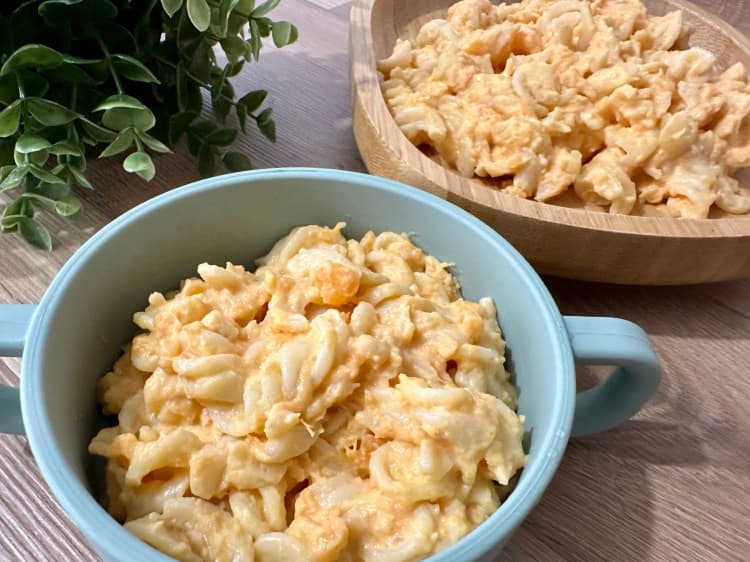
Creamy Sweet Potato Pasta

Squash & Apple Puree

Beet Pancakes
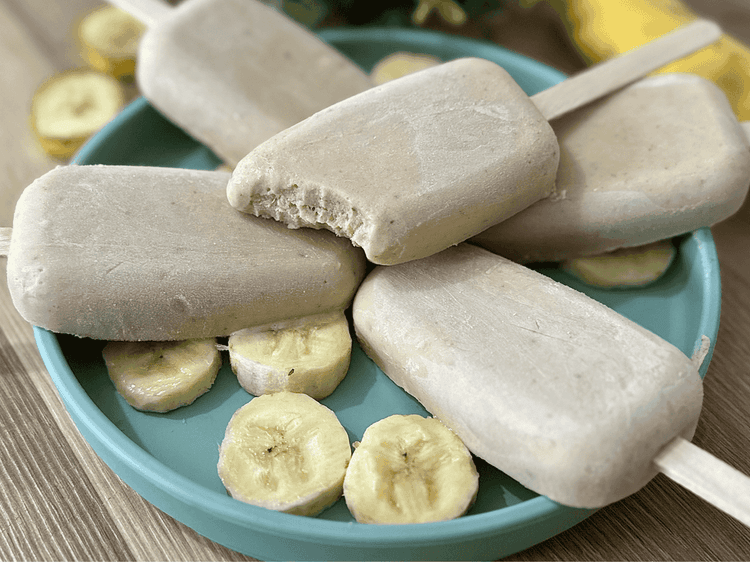
Homemade Banana Popsicles
Get new recipes to your inbox
Subscribe to our weekly newsletter and get new recipes sent to your inbox!